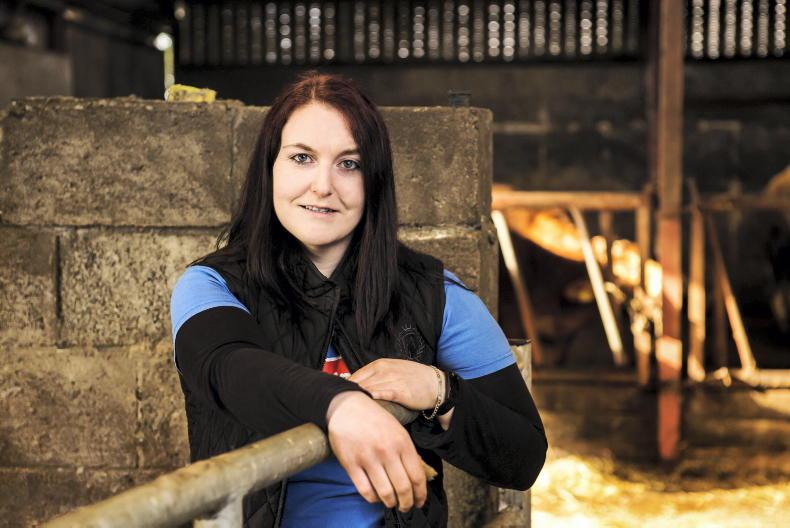Grass management: Reports on grass growth and grass supplies remain highly variable. Growth rates have in general improved this week, but many farmers are still short on grass and growth will ease with lower temperatures forecast for next week.
Steps should continue to be taken to put the farm in a better position of maximising growth. This includes batching ewes and lambs in to larger grazing groups. This will afford a greater opportunity for swards to recover and to get grass supplies back on track.
Fertiliser should also be applied following grazing. The application rate will be influenced by grass demand, current supplies and previous slurry/fertiliser applications. Highly stocked farmers should continue to apply 25 to 30 units of N/acre to ensure grass supply remains ahead of demand, while lowly stocked farms may get away with 15 to 20 units of N.
Now is also a good opportunity to address a soil phosphorus and potassium deficit, but ensure that you stay within the limits for your farm. Slurry should be earmarked to silage swards with applications on grazing ground, extending the turnaround time to re-graze paddocks.
It is also important to conserve existing grass supplies until they are in a position of meeting demand, as grazing covers at too low of a grass height will make it difficult to build supplies.
Where ewes have access to limited grass supplies of 3.5cm to 4cm in sward height, then feeding 0.5kg to 1kg concentrates will help to reduce demand. Where supplies are especially tight, then housing dry replacement ewe hoggets for a period can also help to reduce demand.
Scald in young lambs: There are reports of scald in young lambs at an earlier stage of the season than normal. Footbathing is an effective treatment, but can be difficult with young lambs until they become accustomed to passing through a footbath. Individual treatment can be best utilised with application of an appropriate aerosol foot spray or mixed solution.
The two most common footbath products continue to be a copper and zinc solution diluted at a rate of 10%, with numerous other products now available on the market. Formalin (dilution rate of 3% to 5%) is also a relatively common product, but some health specialists cite that formalin can be hard on young lambs and result in a hardening of the hoof.
Take care to wear protective eye wear/ clothing where footbathing young lambs that have to be handled in to the bath, to avoid product splashing solution in to your eyes/onto exposed skin. Adequate ventilation is also critical where working with formalin.
The best success is to leave sheep affected standing in the footbatch solution before turning out to a hard surface, to allow time for the solution to dry on the hoof.
Ewes on their back: With the rise in temperatures and continued dry spell of weather, there have been more reports of ewes going on their back, with heavy in-lamb ewes in outdoor lambing systems most at risk.
While it will not completely eliminate the problem, some farmers have found that placing an implement such as a trailer, land roller, etc, that cannot be damaged by sheep scratching can help to reduce the incidence of issues. There will be little option with repeat offenders, but to house ewes until they have lambed. Increased supervision is important, as such heavily pregnant ewes can quickly die in such conditions.
Grass management: Reports on grass growth and grass supplies remain highly variable. Growth rates have in general improved this week, but many farmers are still short on grass and growth will ease with lower temperatures forecast for next week.
Steps should continue to be taken to put the farm in a better position of maximising growth. This includes batching ewes and lambs in to larger grazing groups. This will afford a greater opportunity for swards to recover and to get grass supplies back on track.
Fertiliser should also be applied following grazing. The application rate will be influenced by grass demand, current supplies and previous slurry/fertiliser applications. Highly stocked farmers should continue to apply 25 to 30 units of N/acre to ensure grass supply remains ahead of demand, while lowly stocked farms may get away with 15 to 20 units of N.
Now is also a good opportunity to address a soil phosphorus and potassium deficit, but ensure that you stay within the limits for your farm. Slurry should be earmarked to silage swards with applications on grazing ground, extending the turnaround time to re-graze paddocks.
It is also important to conserve existing grass supplies until they are in a position of meeting demand, as grazing covers at too low of a grass height will make it difficult to build supplies.
Where ewes have access to limited grass supplies of 3.5cm to 4cm in sward height, then feeding 0.5kg to 1kg concentrates will help to reduce demand. Where supplies are especially tight, then housing dry replacement ewe hoggets for a period can also help to reduce demand.
Scald in young lambs: There are reports of scald in young lambs at an earlier stage of the season than normal. Footbathing is an effective treatment, but can be difficult with young lambs until they become accustomed to passing through a footbath. Individual treatment can be best utilised with application of an appropriate aerosol foot spray or mixed solution.
The two most common footbath products continue to be a copper and zinc solution diluted at a rate of 10%, with numerous other products now available on the market. Formalin (dilution rate of 3% to 5%) is also a relatively common product, but some health specialists cite that formalin can be hard on young lambs and result in a hardening of the hoof.
Take care to wear protective eye wear/ clothing where footbathing young lambs that have to be handled in to the bath, to avoid product splashing solution in to your eyes/onto exposed skin. Adequate ventilation is also critical where working with formalin.
The best success is to leave sheep affected standing in the footbatch solution before turning out to a hard surface, to allow time for the solution to dry on the hoof.
Ewes on their back: With the rise in temperatures and continued dry spell of weather, there have been more reports of ewes going on their back, with heavy in-lamb ewes in outdoor lambing systems most at risk.
While it will not completely eliminate the problem, some farmers have found that placing an implement such as a trailer, land roller, etc, that cannot be damaged by sheep scratching can help to reduce the incidence of issues. There will be little option with repeat offenders, but to house ewes until they have lambed. Increased supervision is important, as such heavily pregnant ewes can quickly die in such conditions.










SHARING OPTIONS